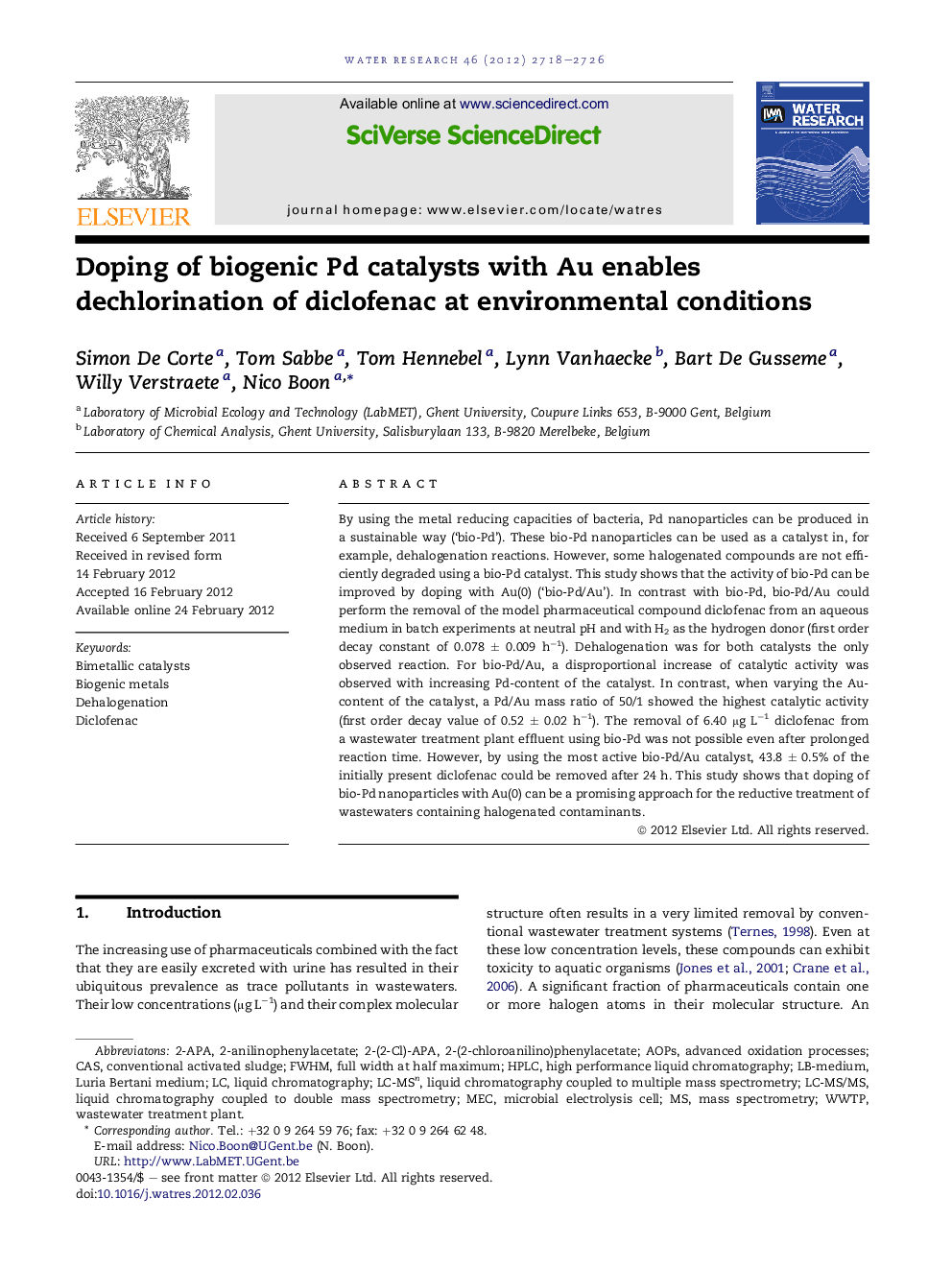| Article ID | Journal | Published Year | Pages | File Type |
|---|---|---|---|---|
| 6367890 | Water Research | 2012 | 9 Pages |
By using the metal reducing capacities of bacteria, Pd nanoparticles can be produced in a sustainable way ('bio-Pd'). These bio-Pd nanoparticles can be used as a catalyst in, for example, dehalogenation reactions. However, some halogenated compounds are not efficiently degraded using a bio-Pd catalyst. This study shows that the activity of bio-Pd can be improved by doping with Au(0) ('bio-Pd/Au'). In contrast with bio-Pd, bio-Pd/Au could perform the removal of the model pharmaceutical compound diclofenac from an aqueous medium in batch experiments at neutral pH and with H2 as the hydrogen donor (first order decay constant of 0.078 ± 0.009 hâ1). Dehalogenation was for both catalysts the only observed reaction. For bio-Pd/Au, a disproportional increase of catalytic activity was observed with increasing Pd-content of the catalyst. In contrast, when varying the Au-content of the catalyst, a Pd/Au mass ratio of 50/1 showed the highest catalytic activity (first order decay value of 0.52 ± 0.02 hâ1). The removal of 6.40 μg Lâ1 diclofenac from a wastewater treatment plant effluent using bio-Pd was not possible even after prolonged reaction time. However, by using the most active bio-Pd/Au catalyst, 43.8 ± 0.5% of the initially present diclofenac could be removed after 24 h. This study shows that doping of bio-Pd nanoparticles with Au(0) can be a promising approach for the reductive treatment of wastewaters containing halogenated contaminants.
Graphical abstractDownload high-res image (139KB)Download full-size imageHighlights⺠Biogenic nano-Pd catalysts were doped with Au(0). ⺠This enabled or improved the dehalogenation of pharmaceutical wastewater pollutants. ⺠The removal of pollutants was demonstrated successfully at environmental conditions.
